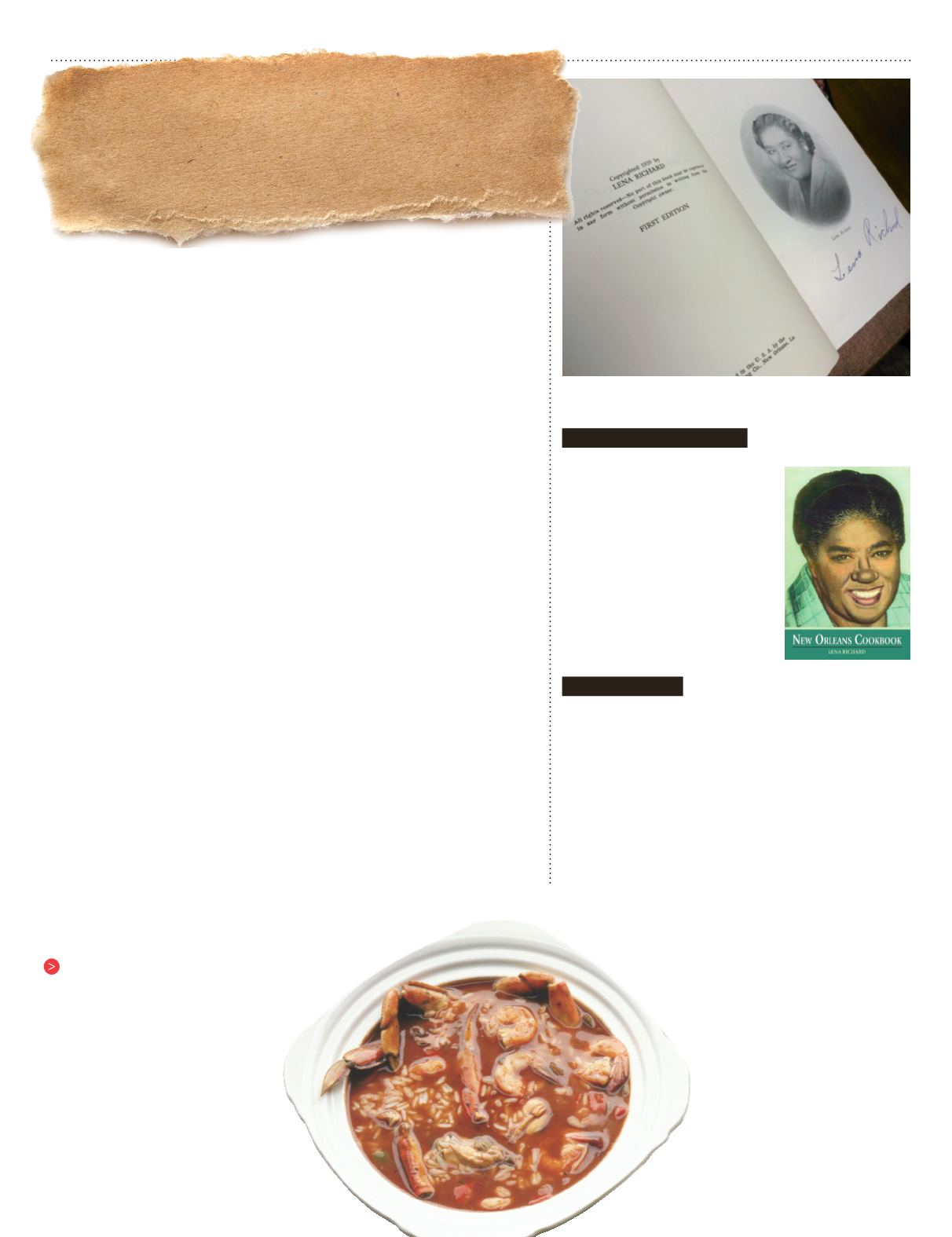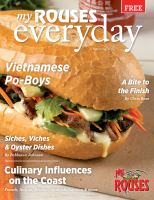

44
MY
ROUSES
EVERYDAY
MAY | JUNE 2015
the
Culinary Influences
issue
L
ong before the days of food-centric television channels, many amateur
cooks pored through the pages of their favorite cookbooks, experimented
with new recipes and hoped for success. Others relied on family and
community networks to garner tried and true recipes and foolproof cooking
techniques. Radio broadcast cooking programs provided a new medium for
exchange in the 1920s and 1930s. Even then, listeners could only use their
imaginations to envision the dishes that they were hearing about and follow
along as best they could. It was not until the late 1940s, when cooking programs
transitioned to television, that food lovers could actually watch chefs prepare
dishes right in front of their eyes. At this time, the barriers between
haute
cuisine
and home cooking began to break down as chefs braved an entirely new
medium through which to share their expertise.
WDSU-TV was at the forefront of early experiments in televised culinary
programs, and Lena Richard, New Orleans culinary icon, stood at the center of
this burgeoning movement. Richard, therefore, was a pioneer in food TV whose
stunning and exceptional career paved the way for the rise of New Orleans-based
celebrity chefs as diverse as Paul Prudhomme, Emeril Lagasse and David Guas.
By the spring of 1950,WDSU-TV’s cameras were steadily broadcasting footage
of Richard’s
New Orleans Cook Book
throughout the Crescent City. According
to advertisements in The Times-Picayune, the cooking show aired twice
weekly on Tuesdays and Thursdays at 5:00 in the evening, featuring Richard
and her assistant, Marie Matthews. During the program, Richard guided
television audiences through her cookbook,
New Orleans Cook Book
, published
by Houghton Mifflin in 1940. She featured tantalizing recipes such as “Stuffed
Pork Chops” and “Ham and Potato Croquettes.” Undoubtedly, she shared her
recipe for “Gumbo Fil
é
,” which was the house specialty at her widely respected
restaurant, the Gumbo House.
The restaurant, which opened in 1949, was located at 1936 Louisiana Avenue,
and was very much a family operated business. Richard’s son-in-law, Leroy
Rhodes, managed the restaurant. Her husband, Percival, ensured the property
was well maintained, and her daughter, Marie, managed the finances. Richard,
of course, handled the cooking, which attracted a diverse patron base from
around the city. Even in the midst of Jim Crow, this restaurant served both
black and white clientele. Food, then, was a unifying force
in a segregated South.
Ashley Rose Young, is a PhD Candidate
in history at Duke University. Over
the past several years, she has
collaborated with the Southern
Food & Beverage Museum on
the
Lena Richard: Pioneer
in Food TV
exhibit and
oral history project. You can
follow her research and culinary
experiments at http://lenarichard.
blogspot.comLena Richard’s Gumbo Filé:
WHAT YOU WILL NEED
1
cup chopped chicken meat
2½ quarts chicken stock
½
dozen crabs
1
pound lake shrimp
½
pound or 1 slice raw ham
1
bay leaf
3
teaspoons filé
1
medium sized onion
1
clove of garlic
3
tablespoons flour
4
tablespoons cooking oil
Salt and pepper, to taste
HOW TO PREP
Fry ham and shrimp in cooking oil until ham is a golden
brown. Remove ham and shrimp from fat. Make a roux with
flour and fat, add onions and cook until a golden brown. Add
crabs, chicken, ham and shrimp, stock and all seasonings except
salt and pepper. Cook over a slow fire until liquid has reduced to
about 1½ quarts. Season with salt and pepper and, just before
serving, stir in file. It is customary to serve Gumbo Filé with rice.
Richard’s career was not solely defined by her successes as a
celebrity chef or as a restaurant owner and operator. She was also
committed to improving the lives of young African-Americans in
New Orleans. In fact, she established a cooking school to train the
next generation of African-American culinary professionals. In her
cookbook, Richard explains that her purpose in opening
the cooking school was “to teach men and women the
art of food preparation and serving in order that
they would become capable of preparing and
serving food for any occasion and also that
they might be in a position to demand higher
wages.’’ Her commitment and mentorship
advanced the careers of hundreds of
black professionals in the Jim Crow
South and contributed to a shifting
environment that sought to open
up opportunities for all Americans
regardless of race or gender.
Lena Richard’s
New Orleans CookBook
by
Ashley Rose Young















